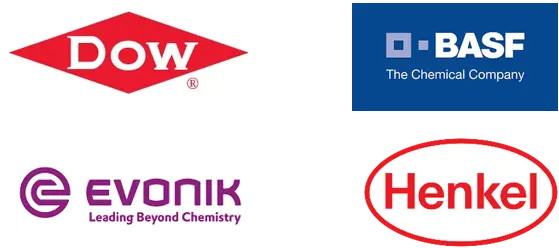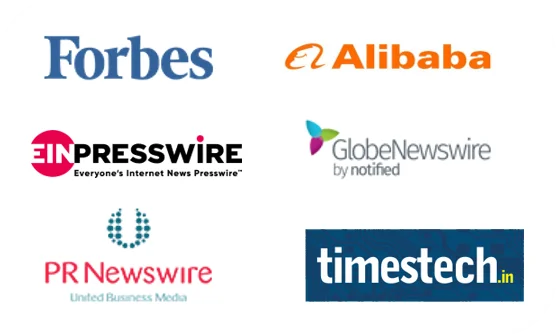Market Overview:
"The global textile binders market was valued at US$ 3.9 Billion in 2024 and is expected to register a CAGR of 4.1% over the forecast period and reach US$ 5.6 Billion in 2033."
|
Report Metric |
Report Details |
|
Base Year |
2024 |
|
Forecast Period |
2025-2033 |
|
Historical Years |
2021-2023 |
|
Textile Binders Market Growth Rate (2025-2033) |
4.1% |
Textile binders are essential components in the textile industry, and offer improved fabric performance and functionality. These products serve to bind fibers together, enhance color retention, provide resistance to abrasion, and impart desired finishes. Textile binders are crucial in processes like dyeing, printing, and coating, and enhance fabric durability and appearance.
Various types of textile binders cater to specific need and acrylic binders provide excellent color fastness and adhesion, suitable for a wide range of fabrics. Polyurethane binders offer elasticity and durability, ideal for sportswear and outdoor textiles. Styrene-butadiene binders enhance strength and are used in nonwoven fabrics. These binders enable manufacturers to create textiles with desired properties, meeting diverse industry demands.
The global textile binders market is registering steady revenue growth and this is primarily supported by increasing textile production and innovation. Also, rising consumer demand for high-performance and sustainable textiles and manufacturers providing specialized binding services, catering to various industries, are driving market revenue growth. Initiatives towards development of more eco-friendly binders align with sustainability goals, and serve to address environmental concerns. Analysis and insights reveal a competitive landscape with acrylic, polyurethane, and styrene-butadiene binders dominating.
Textile Binders Market Trends and Drivers:
Sustainable Manufacturing: Growing environmental awareness is driving incline in demand for sustainable textile binders. Eco-friendly formulations reduce carbon footprint, aligning with consumer preferences and regulatory standards. This trend supports shift in preference for more sustainable materials and products and is driving revenue growth.
Technical Advancements: Ongoing research and development leads to innovative binder formulations that enhance fabric performance. Textile binders with moisture-wicking, UV protection, and anti-bacterial properties cater to niche markets, driving premium pricing and revenue growth.
Rising Textile Production: The expanding textile and apparel industry, particularly in emerging markets, increases the need for binders that provide durability and aesthetics. As production scales up, the demand for binders also surges, and this is positively impacting overall market revenue.
Customization and Specialty Textiles: Textile manufacturers increasingly seek tailor-made binder solutions for specific fabrics and applications. This customization trend leads to a higher value per unit, contributing to revenue growth as manufacturers pay premiums for specialized binders.
Shift Towards Performance Textiles: Consumer demand for activewear, technical textiles, and performance-oriented clothing drives the need for binders that enhance fabric resilience, stretch, and moisture management. This shift towards performance textiles supports demand for advanced binders, and is driving revenue growth.
Strategic Collaborations and Partnerships: Players in the textile binder market collaborate with textile manufacturers and brands to co-develop innovative solutions. Such partnerships leverage the strengths of both parties, drive product adoption, and create revenue growth opportunities through expanded market reach.
Textile Binders Market Restraints:
Raw Material Price Volatility: Fluctuations in the prices of key raw materials used in binder formulations, such as polymers and chemicals, can lead to cost uncertainties for manufacturers. This can affect profit margins and hinder revenue growth.
Regulatory Compliance Challenges: Stringent regulations related to environmental and health safety standards may necessitate reformulation of binder products. Compliance costs and adjustments to meet evolving regulations can slow down product development and impact revenue growth.
Competition from Alternatives: Emerging alternatives to traditional textile binders, such as bio-based binders and innovative fabric treatments, pose a threat. These alternatives might offer comparable performance while having a lower environmental impact, diverting market share and impacting revenue.
Slow Adoption of Sustainable Binders: While there is a growing demand for sustainable products, adoption of eco-friendly binders can be hindered by higher costs and potential performance trade-offs. This slower adoption can limit potential revenue growth.
Fluctuating Textile Demand: Demand for textiles can be cyclical and influenced by economic factors. In times of reduced consumer spending, the demand for textiles and subsequently binders may decrease, negatively affecting revenue growth.
Global Supply Chain Disruptions: Events like pandemics, natural disasters, or geopolitical tensions can disrupt the global supply chain. Supply shortages or transportation difficulties can lead to production delays and impact the timely delivery of binder products, leading to revenue loss.
Mitigating these restraints requires strategic planning, diversification of product offerings, efficient supply chain management, and a focus on innovative and value-added solutions that cater to the evolving needs of the textile industry and consumers.
Textile Binders Market Opportunities:
Innovation in Formulations: Developing novel binder formulations that offer enhanced properties such as antimicrobial effects, self-cleaning capabilities, and smart textiles creates opportunities for premium products with higher profit margins, thus boosting revenue streams.
Customization Services: Offering tailored binder solutions to match specific fabric characteristics and end-use requirements allows companies to charge premium prices for personalized products, generating additional revenue.
Partnerships with Textile Manufacturers: Collaborating closely with textile manufacturers enables companies to co-create specialized binder solutions. Such partnerships lead to increased product adoption, shared expertise, and a broader market reach, contributing to revenue growth.
Sustainability Focus: Investing in the development of eco-friendly binders aligns with growing consumer demand for sustainable textiles. Companies can charge a premium for environmentally responsible products, creating a unique selling proposition and enhancing revenue streams.
Value-Added Services: Providing technical support, training, and guidance on binder application processes to customers can establish strong relationships. These value-added services foster loyalty and lead to repeat business, ultimately boosting revenue.
Global Market Expansion: Exploring untapped markets and regions, especially in emerging economies with increasing textile production, presents opportunities for market penetration and revenue expansion beyond established markets.
By capitalizing on these opportunities, textile binder companies can diversify their revenue streams, differentiate themselves from competitors, and position themselves for sustainable growth in the dynamic global market.
Textile Binders Market Segmentation:
By Product Type:
- Acrylic Binders
- Vinyl Acetate Binders
- Polyurethane Binders
- Styrene-Butadiene Binders
- Others
By Application:
- Apparel
- Home Textiles
- Technical Textiles
- Nonwovens
- Others
By End-Use Industry:
- Fashion and Apparel
- Sportswear
- Automotive Textiles
- Medical Textiles
- Others
By Binder Formulation:
- Water-Based Binders
- Solvent-Based Binders
- Reactive Binders
- High-Solid Binders
- Others
By Functionality:
- Durability Enhancement
- Color Retention
- Moisture Management
- UV Protection
- Specialty Finishes
- Others
Textile Binders Market, By Region:
- North America
- Latin America
- Europe
- Asia Pacific
- Middle East Africa
In the textile binders market, regional analysis reveals key growth centers. Asia-Pacific's rapid market revenue growth is driven by high production volumes and export-oriented strategies across textile manufacturing hubs such as China, India, and Vietnam. North America has been registering steady demand, owing to rising focus on sustainable and high-performance textiles. Europe, with its emphasis on eco-friendly products, drives innovation in binder formulations. Consumers in Middle Eastern countries seek enhanced fabric properties for luxury textiles. Companies operating in countries in these regions leverage developments such as sustainable initiatives, technical advancements, and customized solutions to align product sales with evolving demands.
Leading Companies in Textile Binders Market & Competitive Landscape:
The global textile binders market is characterized by a competitive landscape marked by the presence of several prominent manufacturers vying for market share. These manufacturers are engaged in continuous innovation, product development, and strategic partnerships to maintain their competitive edge in a dynamic industry.
Leading textile binders manufacturers include Dow Chemical Company, renowned for its range of acrylic, vinyl acetate, and polyurethane binders that cater to various textile applications. BASF SE is another key player with a diverse portfolio of binder solutions, emphasizing sustainability and performance enhancement. Arkema Group stands out for its cutting-edge binders that address specialized textile needs, including nonwovens and technical textiles.
Clariant, which is a global specialty chemical company, is recognized for its binder offerings that align with eco-friendly trends and textile innovation. Rudolf Group is a significant player offering a wide spectrum of binders, particularly focusing on eco-friendly and functional solutions, capturing the growing demand for sustainable textiles.
Sumitomo Chemical Co., Ltd. is known for its textile binders catering to industries like fashion, sportswear, and automotive textiles, leveraging its research and development expertise. Huntsman Corporation is a key player with a focus on textile solutions, including binders, that enhance performance and durability.
These leading manufacturers have established their prominence through a combination of research-driven innovations, strong distribution networks, and responsiveness to evolving industry demands. Their products are utilized across an array of applications such as fashion, sportswear, technical textiles, and more, reflecting the versatility of the textile binders market. By continually adapting to environmental regulations, sustainability concerns, and consumer preferences, these manufacturers maintain a strong foothold in the competitive landscape.
As the textile industry evolves and emphasizes sustainability, customization, and high-performance fabrics, the competitive landscape of textile binders is expected to see further innovation and strategic collaborations. These manufacturers remain at the forefront, steering the industry towards advanced solutions that enhance fabric attributes, aesthetics, and functionality, thereby shaping the trajectory of the global textile binders market.
Company List:
- Dow Chemical Company
- BASF SE
- Arkema Group
- Clariant
- Rudolf Group
- Sumitomo Chemical Co., Ltd.
- Huntsman Corporation
- Solvay SA
- DyStar Group
- Lubrizol Corporation
- Kemin Industries, Inc.
- Omnova Solutions Inc.
- Croda International Plc
- Matsumoto Yushi-Seiyaku Co., Ltd.
- Evonik Industries AG
Textile Binders Market Research Scope
|
Report Metric |
Report Details |
|
Textile Binders Market size available for the years |
2021-2033 |
|
Base Year |
2024 |
|
Forecast Period |
2025-2033 |
|
Compound Annual Growth Rate (CAGR) |
4.1% |
|
Segment covered |
Product Type: Acrylic Binders, Vinyl Acetate Binders, Polyurethane Binders, Styrene-Butadiene Binders, Others Application: Apparel, Home Textiles, Technical Textiles, Nonwovens, Others End-Use Industry: Fashion and Apparel, Sportswear, Automotive Textiles, Medical Textiles, Others Binder Formulation: Water-Based Binders, Solvent-Based Binders, Reactive Binders, High-Solid Binders, Others Functionality: Durability Enhancement, Color Retention, Moisture Management, UV Protection, Specialty Finishes, Others |
|
Regions Covered |
North America: The U.S.Canada Latin America: Brazil, Mexico, Argentina, Rest of Latin America Asia Pacific: China, India, Japan, Australia New Zealand, ASEAN, Rest of Asia Pacific Europe: Germany, The U.K., France, Spain, Italy, Russia, Poland, BENELUX, NORDIC, Rest of Europe The Middle East & Africa: Saudi Arabia, United Arab Emirates, South Africa, Egypt, Israel, and Rest of MEA |
|
Fastest Growing Market in Europe |
Germany |
|
Largest Market in Asia Pacific |
China |
|
Key Players |
Dow Chemical Company, BASF SE, Arkema Group, Clariant, Rudolf Group, Sumitomo Chemical Co., Ltd., Huntsman Corporation, Solvay SA, DyStar Group, Lubrizol Corporation, Kemin Industries, Inc., Omnova Solutions Inc., Croda International Plc, Matsumoto Yushi-Seiyaku Co., Ltd., Evonik Industries AG |
Frequently Asked Question
What are the key product type segments in the textile binders market?
The textile binders market research report includes product types such as acrylic binders, vinyl acetate binders, polyurethane binders, styrene-butadiene binders, and other.
What are the primary applications of textile binders?
Textile binders find applications in various sectors, including apparel, home textiles, technical textiles, nonwovens, and other specialized textile applications.
In which industries is demand high for textile binders?
Demand for textile binders is high from industries such as fashion and apparel, sportswear, automotive textiles, medical textiles, and other sectors that require enhanced fabric performance and aesthetics.
What binder formulations are commonly used in the market?
Binder formulations widely used include water-based binders, solvent-based binders, reactive binders, high-solid binders, and other.
What functional attributes do textile binders offer?
Textile Binders provide a range of functionalities, such as durability enhancement, color retention, moisture management, UV protection, specialty finishes, and others that enhance fabric properties and performance.

